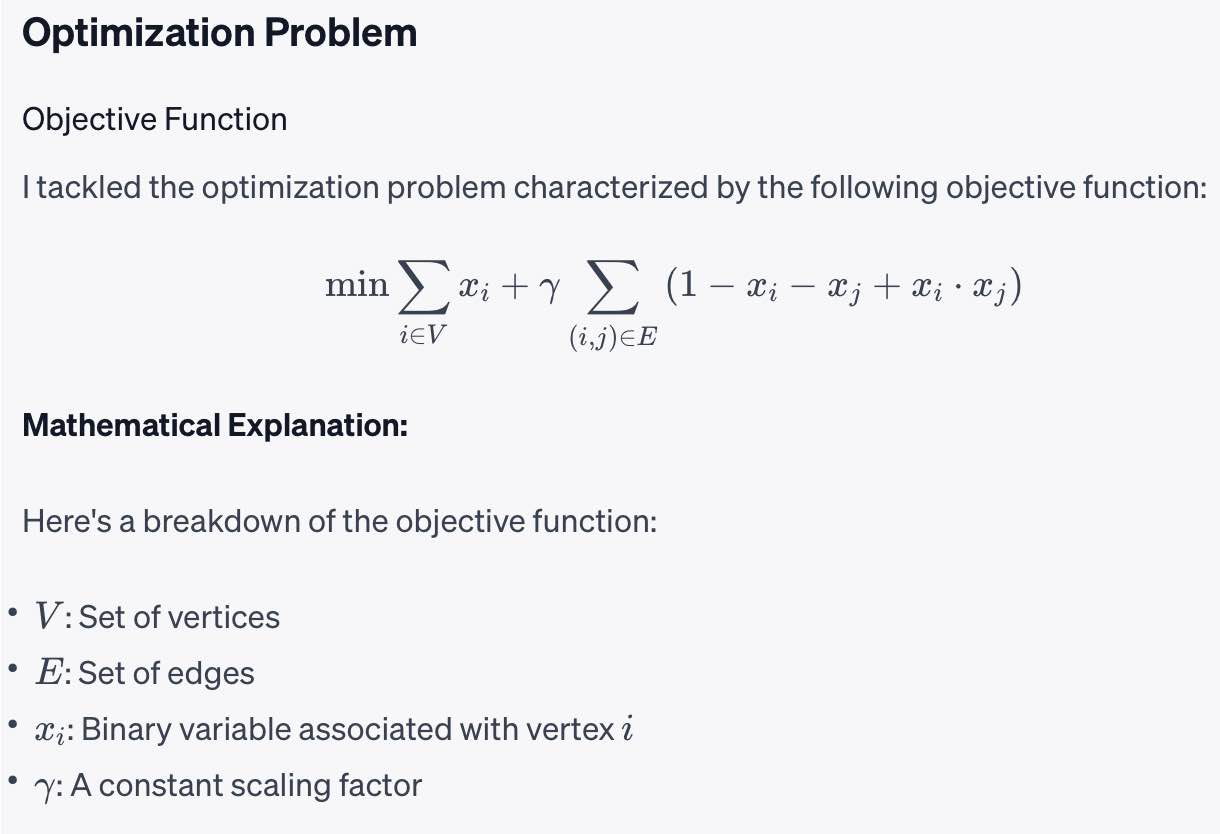- Introduction
- Technologies Used
- Optimization Problem
- DQM Model
- Results
- Setup and Installation
- Contributing
In this project, I've applied the power of D-Wave's quantum computing to solve a complex optimization problem. This serves both as a portfolio project and a detailed guide for students interested in venturing into the realm of quantum computing.
- Python 3.x
- D-Wave Ocean SDK
- NetworkX for graph manipulation
I tackled the optimization problem characterized by the following objective function:
[ \min \sum_{i \in V} x_i+\gamma \sum_{(i, j) \in E}\left(1-x_i-x_j+x_i \cdot x_j\right) ]
Mathematical Explanation:
Here's a breakdown of the objective function:
- (V): Set of vertices
- (E): Set of edges
- (x_i): Binary variable associated with vertex (i)
- ( \gamma ): A constant scaling factor
For this project, I've used D-Wave's Discrete Quadratic Model (DQM) to formulate and solve the optimization problem.
# Initialize the DQM object
dqm = DiscreteQuadraticModel()- The Discrete Quadratic Model is initialized using D-Wave's Ocean SDK.
- Variables and their quadratic interactions are then added to the DQM object.
outcomes, results data visualizations; quantum solutions' efficiency and accuracy.
Here are the steps to get this project up and running on your local machine.
# Clone the repository
git clone https://github.com/your-username/your-repo-name.git
# Install dependencies
pip install dwave-ocean-sdk
# Run the code
python your-main-script.py
